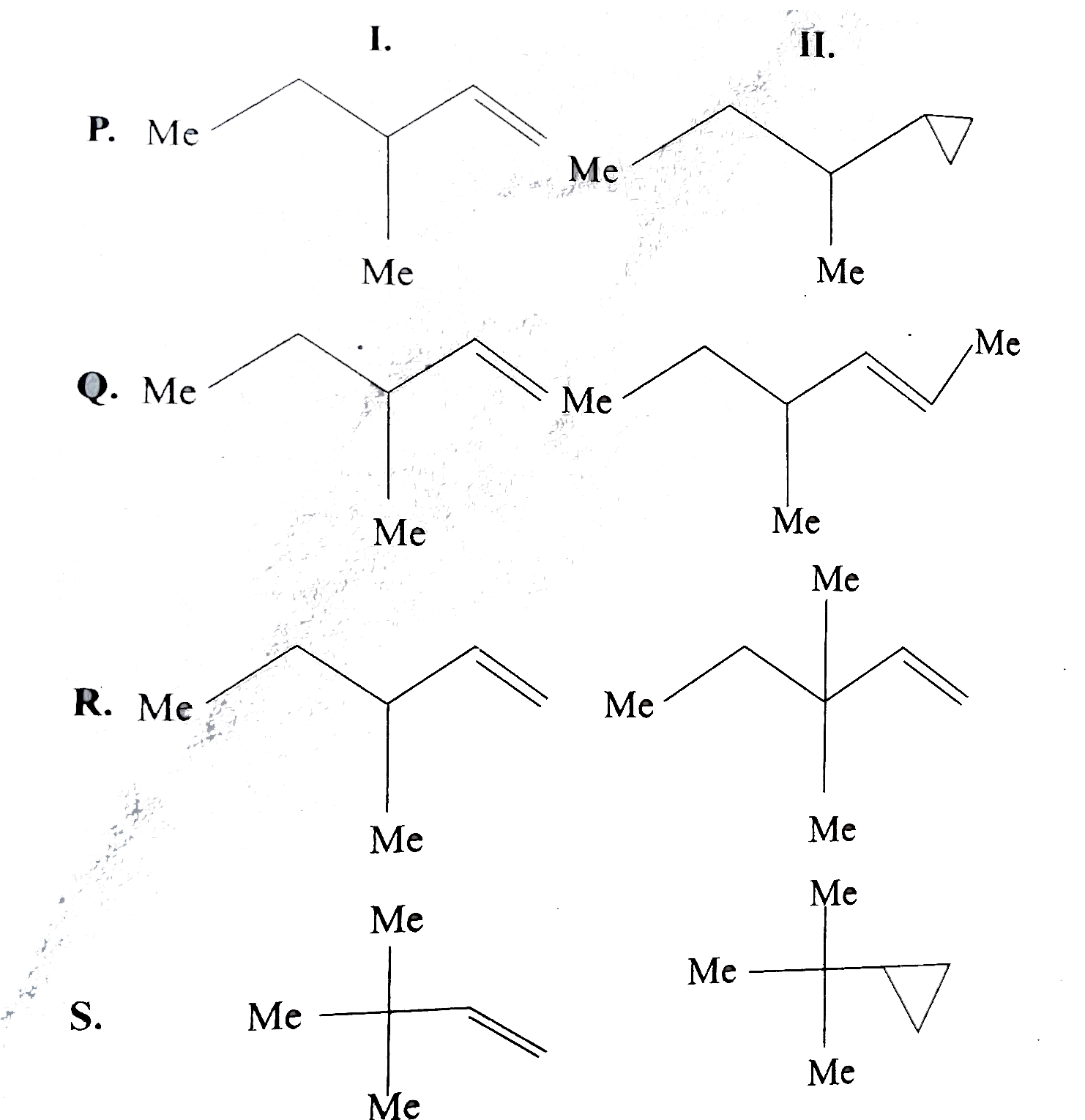Name the lowest molecular weight alcohol which is optically active.
To determine the lowest molecular weight alcohol that is optically active, we need to follow these steps:
Step 1: Understand Optical Activity
Optically active compounds are those that can rotate plane-polarized light. This property arises from the presence of chiral centers in the molecule. A chiral center is typically a carbon atom that is bonded to four different groups.
Hint: Look for compounds with chiral centers, as they are the key to optical activity.
Step 2: Identify Alcohols
Alcohols are organic compounds that contain one or more hydroxyl (-OH) groups. The simplest alcohols are derived from hydrocarbons by replacing a hydrogen atom with a hydroxyl group.
Hint: Recall the general structure of alcohols, which is R-OH, where R is an alkyl group.
Step 3: Find the Lowest Molecular Weight Alcohol
We need to find the simplest alcohol that has a chiral center. The simplest alcohols include methanol (CH₃OH), ethanol (C₂H₅OH), and propanol (C₃H₇OH). However, these do not have chiral centers.
Hint: Consider alcohols with more than three carbons, as they may contain chiral centers.
Step 4: Analyze Butan-2-ol
Butan-2-ol (C₄H₁₀O) is an alcohol that has a chiral center. The structure of butan-2-ol is:
CH₃∣∣CH₃−CH−CH₂−OH∣∣H
In butan-2-ol, the second carbon (the one bonded to the -OH group) is attached to four different groups: a methyl group (CH₃), an ethyl group (CH₂CH₃), a hydrogen atom (H), and a hydroxyl group (-OH). This makes it chiral and thus optically active.
Hint: Check the connectivity of the carbon atoms to identify chiral centers.
Step 5: Calculate the Molecular Weight
The molecular weight of butan-2-ol can be calculated as follows:
- Carbon (C): 4 atoms × 12.01 g/mol = 48.04 g/mol
- Hydrogen (H): 10 atoms × 1.008 g/mol = 10.08 g/mol
- Oxygen (O): 1 atom × 16.00 g/mol = 16.00 g/mol
Total molecular weight = 48.04 + 10.08 + 16.00 = 74.12 g/mol
Conclusion
The lowest molecular weight alcohol that is optically active is butan-2-ol, with a molecular weight of approximately 74.12 g/mol.
Final Answer: Butan-2-ol (C₄H₁₀O) is the lowest molecular weight alcohol that is optically active.
---
Optically active compounds are those that can rotate plane-polarized light. This property arises from the presence of chiral centers in the molecule. A chiral center is typically a carbon atom that is bonded to four different groups.
Alcohols are organic compounds that contain one or more hydroxyl (-OH) groups. The simplest alcohols are derived from hydrocarbons by replacing a hydrogen atom with a hydroxyl group.
We need to find the simplest alcohol that has a chiral center. The simplest alcohols include methanol (CH₃OH), ethanol (C₂H₅OH), and propanol (C₃H₇OH). However, these do not have chiral centers.
Butan-2-ol (C₄H₁₀O) is an alcohol that has a chiral center. The structure of butan-2-ol is:
The molecular weight of butan-2-ol can be calculated as follows:
- Carbon (C): 4 atoms × 12.01 g/mol = 48.04 g/mol
- Hydrogen (H): 10 atoms × 1.008 g/mol = 10.08 g/mol
- Oxygen (O): 1 atom × 16.00 g/mol = 16.00 g/mol
The lowest molecular weight alcohol that is optically active is butan-2-ol, with a molecular weight of approximately 74.12 g/mol.
Topper's Solved these Questions
- BOOK - ICSECHAPTER - ALCOHOLS, PHENOLS AND ETHERS EXERCISE - EXERCISE (PART-II Descriptive Questions) (SHORT ANSWER QUESTIONS)116videos
ALCOHOLS, PHENOLS AND ETHERS
- BOOK - ICSECHAPTER - ALCOHOLS, PHENOLS AND ETHERS EXERCISE - EXERCISE (PART-II Descriptive Questions) (LONG ANSWER QUESTIONS)20videos
ALCOHOLS, PHENOLS AND ETHERS
- BOOK - ICSECHAPTER - ALCOHOLS, PHENOLS AND ETHERS EXERCISE - EXERCISE (PART-I Objective Questions) (Correct the following statements)15videos
ALCOHOLS, PHENOLS AND ETHERS
- BOOK - ICSECHAPTER - ALCOHOLS , PHENOLS AND ETHERS EXERCISE - SOURCE BASED QUESTIONS4videos
ALCOHOLS , PHENOLS AND ETHERS
- BOOK - ICSECHAPTER - ALDEHYDES, KETONES AND CARBOXYLIC ACIDSEXERCISE - EXERCISE (PART-II DESCRIPTIVE QUESTIONS) ( LONG ANSWER QUESTIONS)478videos
ALDEHYDES, KETONES AND CARBOXYLIC ACIDS
Similar Questions
Knowledge Check
- Question 1 - Select One
The compound which is optically active is :
A1-butanolB2-butanolC1-propanolD2-methyl-l-propanol - Question 2 - Select One
Alcohols of low molecular weight are
Asoluble in waterBsoluble in water on heatingCinsoluble in waterDinsoluble in all solvents.
Name thea-amino acid which is optically inactive.
View SolutionWhich of the following is optically active
View SolutionWhich of the following is optically active?
View SolutionCarbene intermediates are produced by the photolysis of diazomethane (CH2N2) or kenene (CH2=C=O). They are also produced by the reaction of CHX3 with base or by Simmons-Smith reaction. There are two types of carbenes, singlet and triplet. They are so called due to their spin state.
An optically active alkene (I) with lowest molecular mass on hydrogenation gives optically inactive alkene, but on insertion of methylene carbene (:CH2) in (I), it gives optically active compound (II). The compounds (I) and (II) are :
 .View Solution
.View SolutionGive the structure of an optically active alkyne (A) having the lowest molecular mass, which on hydrogenation with Lindlard's catalyst and Birch reduction gives the same lowest molecular mass optically active alkene.
View SolutionWhich of these molecule is optically active ?
 View Solution
View Solution

